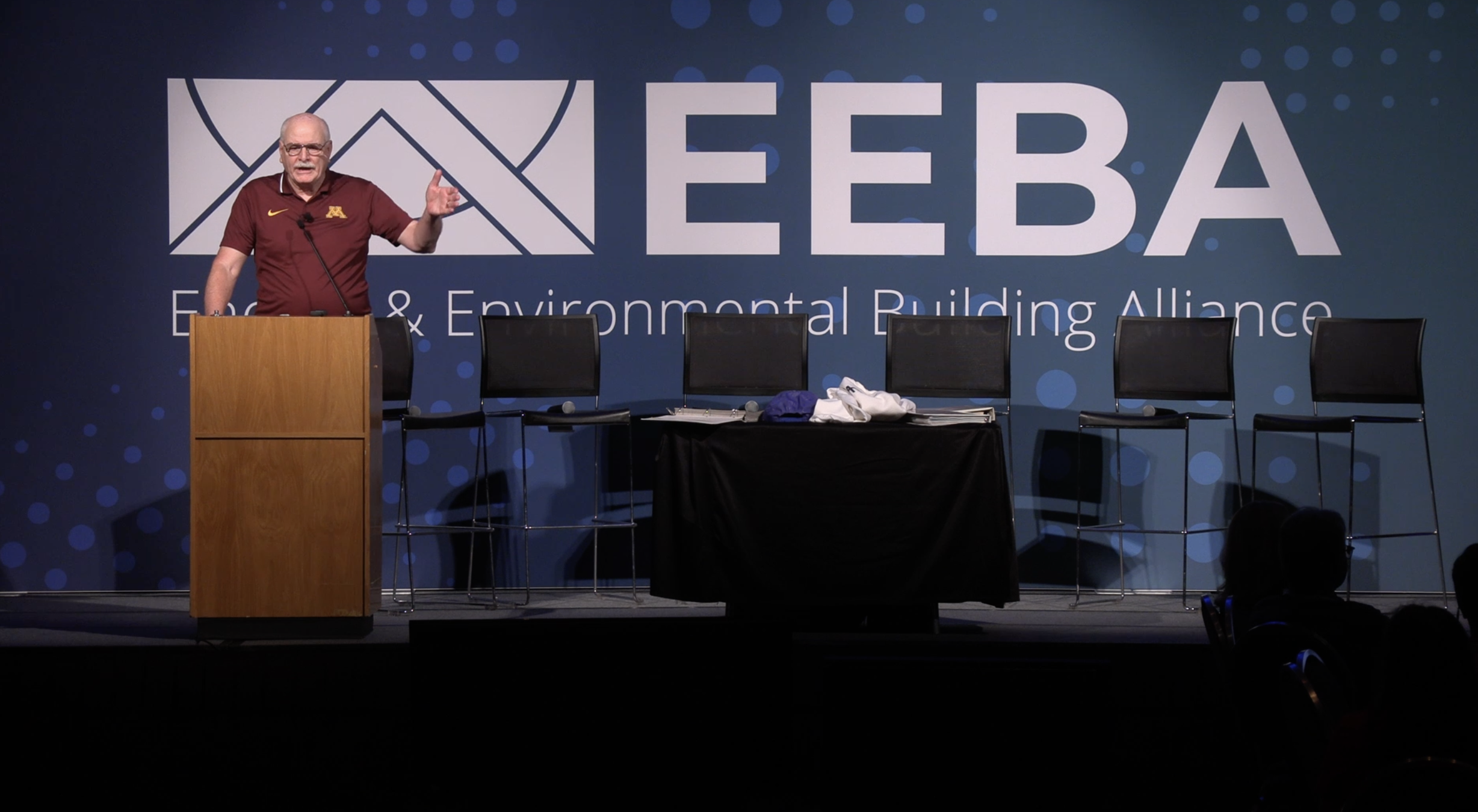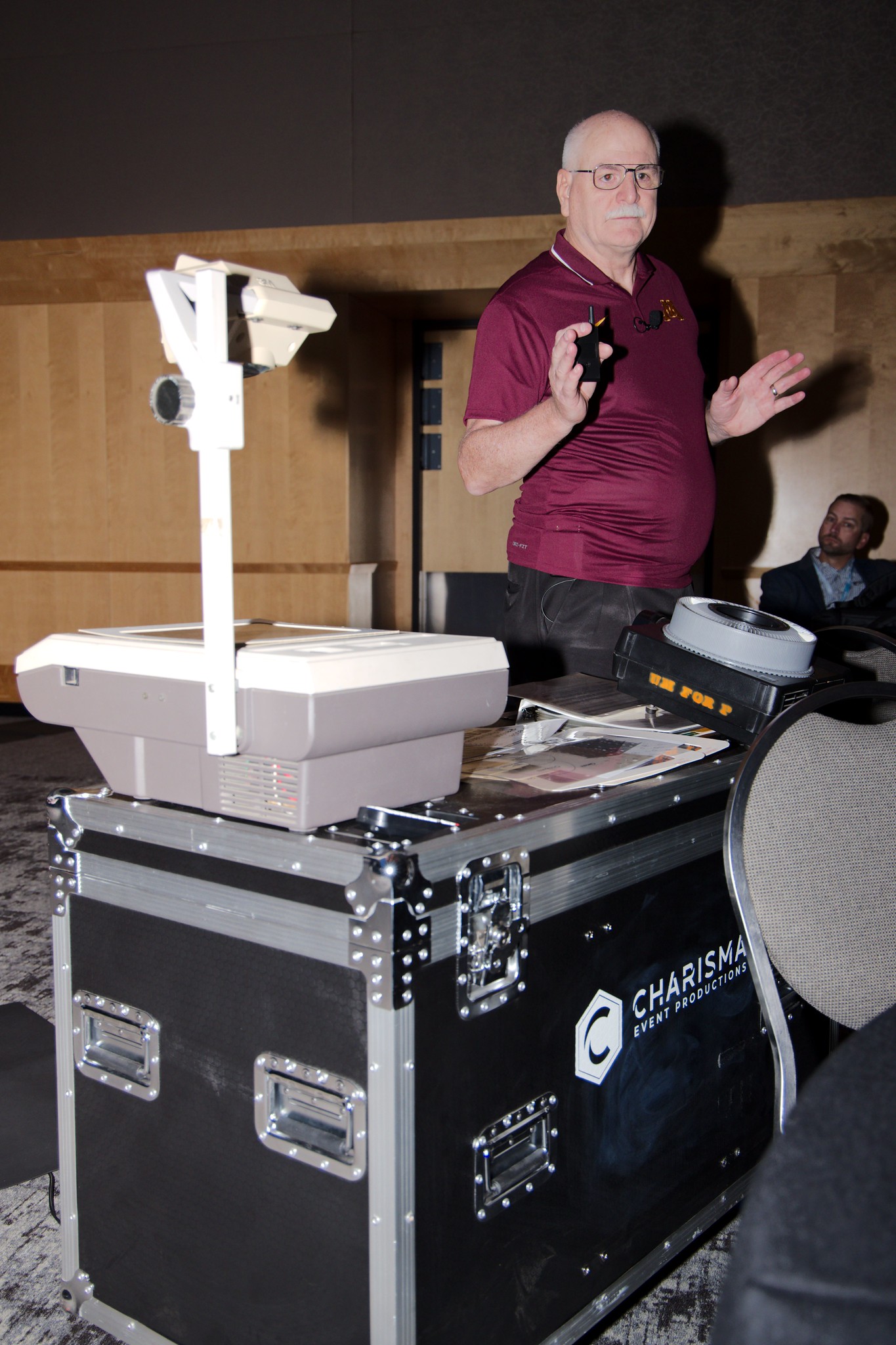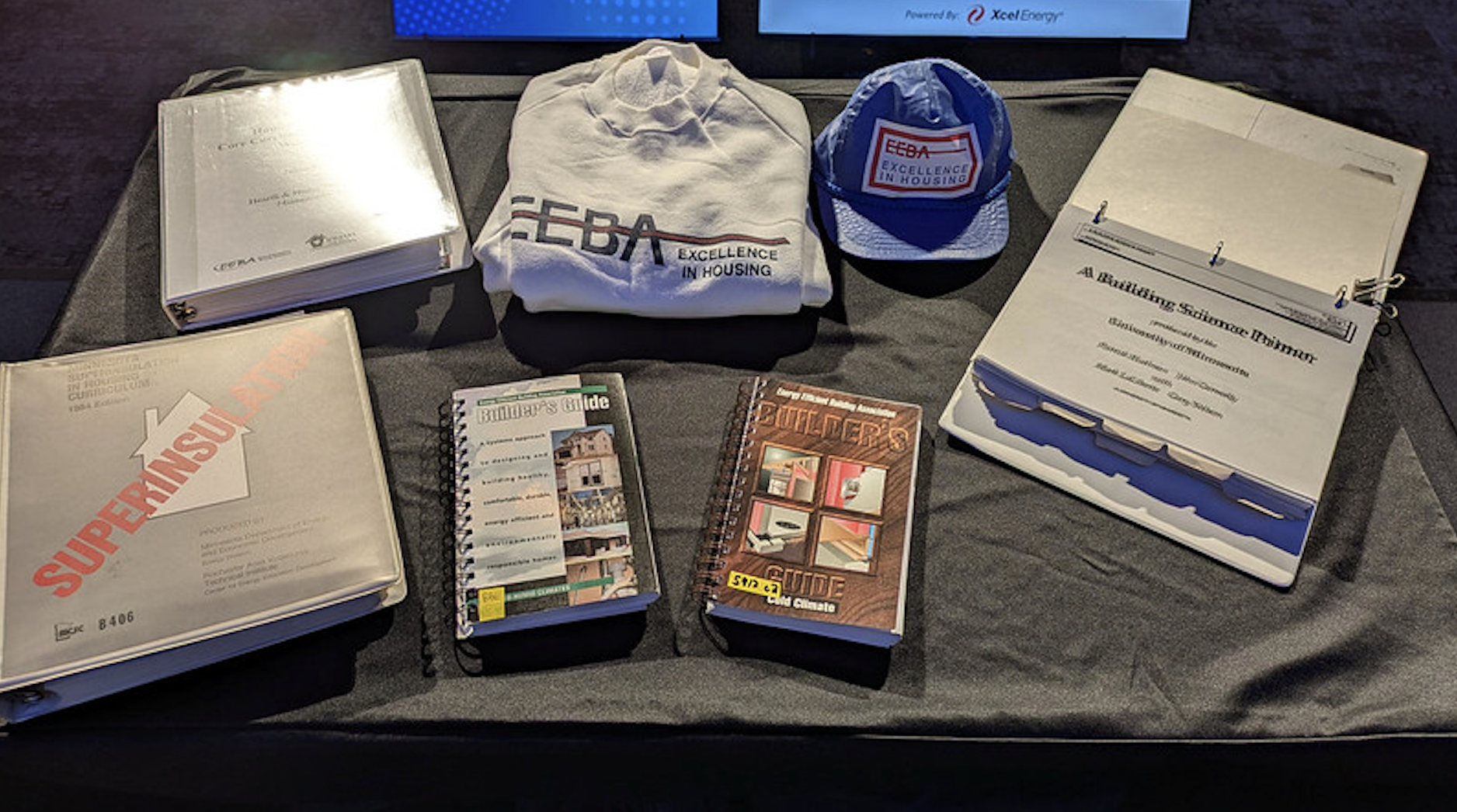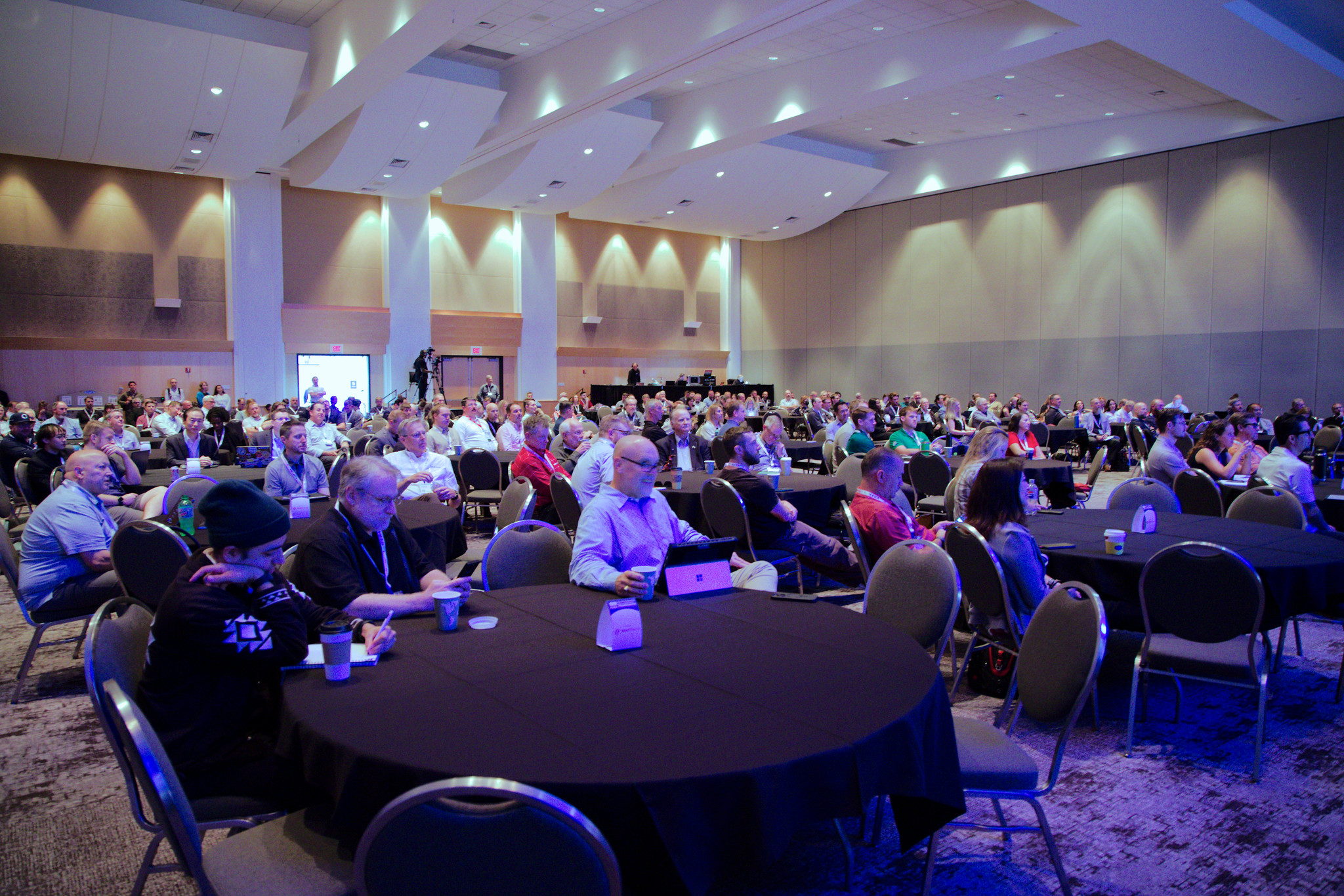When it comes to progress in high-performance homebuilding, the latest technologies — like net zero homes, decarbonization strategies, and advanced materials — often take center stage. But these innovations are built on a foundation of collaboration, learning, and long-term effort. For more than 40 years, the Energy & Environmental Building Alliance (EEBA) has supported the industry through education and practical guidance, helping builders and partners navigate these changes.
At the 2025 High Performance Home Builder Summit, Pat Huelman, a longtime building science professor and EEBA leader, took the stage to remind attendees where it all began. With a mix of humor and heart, he brought the audience on a “trip in the Wayback Machine,” reflecting on EEBA’s origins, evolution, and enduring mission to create better buildings and a better world.


The Early Days: A Movement Takes Shape
EEBA’s story began in 1983, following the Superinsulation Conference held in Rochester, Minnesota. Builders, researchers, and educators gathered to discuss new methods of designing homes that would use dramatically less energy — a concept that was ahead of its time.
In a moment of inspiration (and perhaps over a drink), a group of attendees decided it was time to form an organization that could sustain and expand these ideas. The Energy Efficient Building Association was born — a name that would evolve over time, but an acronym that would always remain the same: EEBA.
From the start, EEBA aimed to unite professionals across disciplines — builders, architects, engineers, and academics — around a shared belief that energy efficiency and occupant comfort could coexist. Early conferences drew international attention, with participation from Canada, Scandinavia, and beyond. EEBA quickly became a hub for collaboration and knowledge exchange, laying the foundation for today’s high-performance homebuilding community.
Building a Movement, Not Just Buildings
As EEBA grew, it became more than just a conference organizer. Under the guidance of leaders like Pat Huelman, the organization published books and technical guides, hosted design competitions, launched newsletters, and formed regional training groups. Its initiatives like Houses That Work, Builder Guides, and Building America partnerships helped translate cutting-edge research into practical applications.

Even in the early 1990s, EEBA’s leadership, including Huelman, was defining what an “energy-efficient building” should mean — not just in terms of energy use, but also moisture control, durability, occupant health, and environmental impact. Long before “sustainability” was a mainstream term, EEBA was already advocating for a holistic approach to building science.
As Pat Huelman explained, “EEBA taught us that the site, the climate, the building enclosure, the mechanical systems, and the occupants all needed to work together.” This systems-based perspective has since become the gold standard in high-performance home design.
Challenges, Commitment, and Continuity
Of course, growth didn’t come without challenges. Like many mission-driven organizations, EEBA faced periods where membership and funding were uncertain. There were times when board members literally signed promissory notes to keep the organization afloat. But their determination and belief in EEBA’s mission never wavered.
That same perseverance, has carried EEBA through changing times and technologies. What began as a small network of innovators with slide projectors and transparency sheets has evolved into a national alliance influencing codes, practices, and policies that shape the future of housing.
Looking Forward: The Next Era of Leadership
Today, EEBA continues to lead through education, partnership, and innovation. Its national and regional events bring together builders, suppliers, and thought leaders committed to achieving high performance, sustainability, and resilience in every home. Through builder training, certification, and collaboration with manufacturers and utilities, EEBA drives real-world impact across the construction industry.

As Pat Huelman reminded attendees, the journey toward high-performance housing has been “not a sprint, but a marathon.” The same issues that challenged builders in 1984 — indoor air quality, moisture management, durability — still require attention today. But thanks to EEBA’s decades of leadership, thousands of professionals now know how to build better.
“Through passion, perseverance, and determination, EEBA is strong. The message is clear — and we’re moving forward.”
After 42 years, that message remains as vital as ever. EEBA’s commitment to education, science, and partnership continues to drive the industry toward a future where every home is energy efficient, healthy, and resilient — and every builder has the tools and knowledge to make it happen.
Watch Pat Huelman’s Full EEBA Legacy Presentation
Join us September 16th-18th, 2026, in Saint Paul, Minnesota, for our High Performance Home Builder Summit — the premier event for building professionals dedicated to advancing high-performance, healthy, and resilient homes!
Learn more and register at the lowest rates today at summit2026.eeba.org!